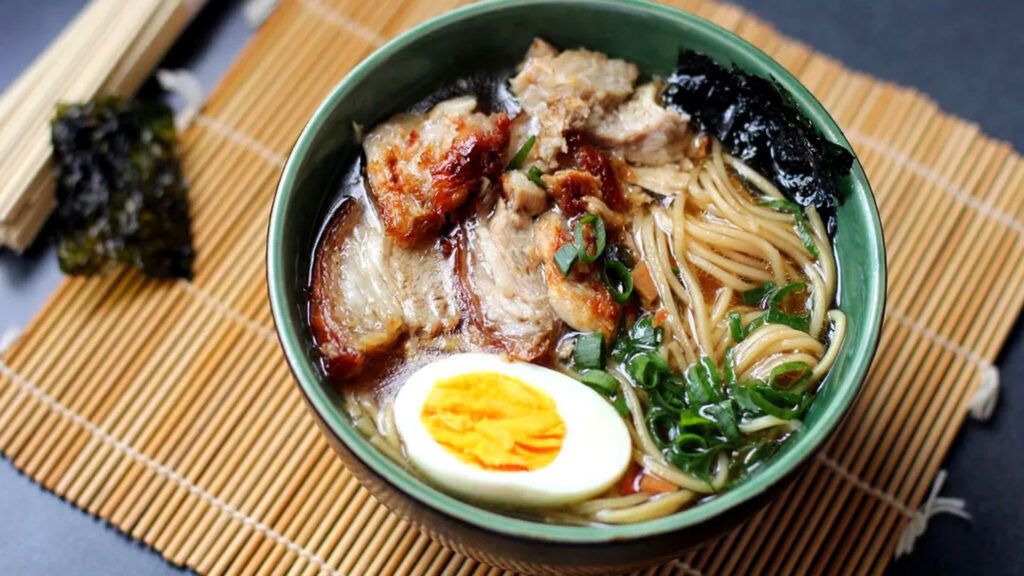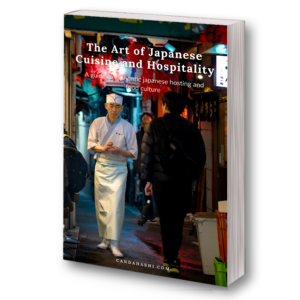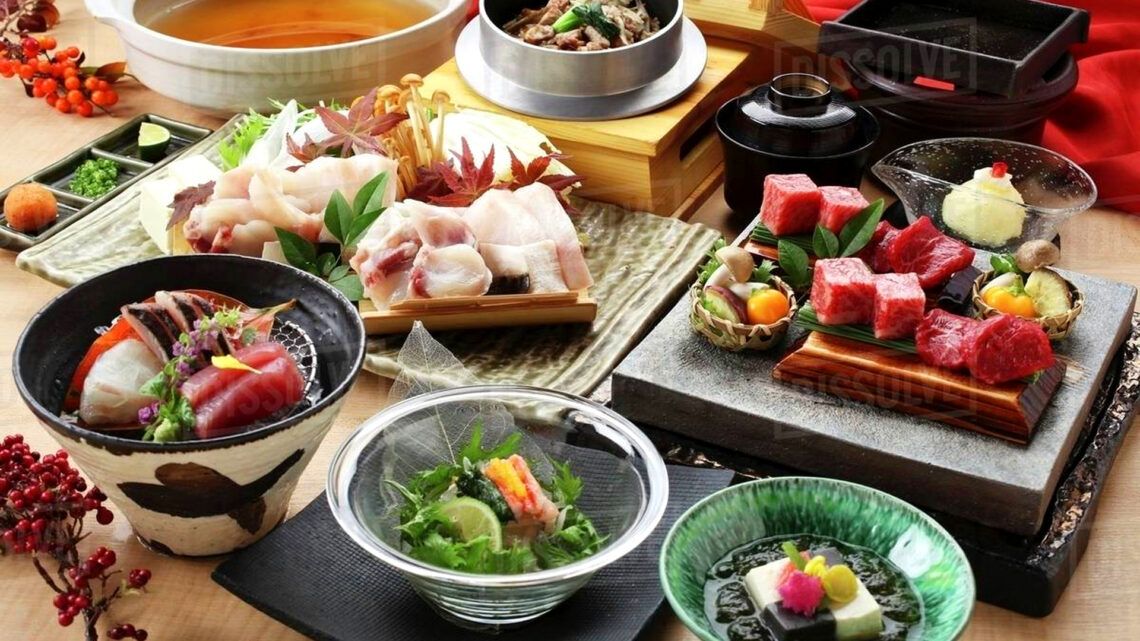
Ramen, the traditional Japanese dish, has become a global phenomenon. The hearty soup with noodles and various ingredients is immensely popular worldwide. In this article, we will take a closer look at the fascination of Ramen and shed light on why it has become an international trend.
Ramen has taken the world by storm. This delectable combination of noodles, savory broth, and an array of toppings has captured the hearts and taste buds of people across the globe. In this article, we will explore the journey of Ramen from its origins in Japan to becoming a beloved international sensation.
Ramen’s roots can be traced back to China, where it was originally known as “lamian,” hand-pulled noodles. During the late 19th century Meiji era, Japan adopted this culinary delight, and it gradually evolved into what we now know as Ramen. Initially, Ramen was a simple dish with thin wheat noodles served in a clear broth. However, as it made its way to various regions in Japan, each area added its unique twist, giving birth to diverse Ramen styles.
Ramen’s adaptability allows it to cater to different tastes and dietary preferences. Chefs worldwide experiment with ingredients and techniques, creating innovative variations that appeal to a broad audience. Umami Experience: The combination of flavors in Ramen, including the umami-rich broth and well-seasoned toppings, provides a deeply satisfying and comforting experience for the palate. Social Experience: Enjoying Ramen often involves gathering with friends or family, fostering a sense of community and camaraderie around the shared love for this beloved dish.
The Ramen craze has extended far beyond Japan’s borders. In cities around the world, Ramen restaurants have sprung up, drawing crowds of enthusiasts eager to savor the authentic taste of this Japanese delicacy. From traditional Ramen-ya to modern fusion eateries, the global Ramen scene continues to evolve and delight foodies everywhere.
The History of Ramen
Ramen has its roots in China and was introduced to Japan during the Meiji era. Initially, it was a simple dish with thin noodles in a clear broth. However, over time, different regions of Japan became known for their unique variations. Nowadays, there are countless Ramen styles, from spicy Miso Ramen to delicate Shoyu Ramen.
The Components of a Perfect Ramen
A delicious bowl of Ramen is characterized by the harmonious combination of various elements:
Noodles
The choice of noodles is crucial for the taste and texture of each Ramen bowl. Whether thick or thin, straight or wavy – the noodles must perfectly complement the other ingredients.
- Ramen noodles come in various shapes and sizes, and the choice of noodle can significantly impact the overall experience. Whether thin and delicate or thick and chewy, the noodles must complement the broth and toppings harmoniously.
- Broth: The soul of Ramen resides in its broth, which can be made from a variety of ingredients such as pork bones (tonkotsu), chicken (shio), or soy sauce (shoyu). The broth’s richness and depth of flavor are crucial in creating an unforgettable Ramen experience.
Broth
The foundation of every Ramen is the broth. It can be made with a meat, fish, or vegetable base and varies depending on the region and taste. The broth is the heart of Ramen, giving it its distinctive flavor.
Toppings
The toppings make Ramen a true delight. From tender pork to dried seaweed and marinated eggs, there are countless ways to enhance and enrich the bowl’s taste. Ramen’s charm lies in its diverse toppings, ranging from succulent slices of pork (chashu) and soft-boiled eggs (ajitsuke tamago) to bamboo shoots, seaweed, and green onions. These toppings not only enhance the visual appeal but also add layers of taste and texture.
The Fascination of Ramen
Why has Ramen become so popular worldwide? The reasons are diverse:
Culinary Diversity
Ramen is an extremely versatile dish that can adapt to different tastes and preferences. Each region has its own Ramen variation, and individual customizations are common in Ramen restaurants.
Umami Experience
The perfect combination of broth, noodles, and toppings creates a unique umami experience. Umami, also known as the “fifth taste,” gives Ramen an irresistible savory note.
Social Experience
Enjoying Ramen is a social experience. In many Ramen restaurants, guests sit at communal tables and can relish the meal in the company of friends or strangers.
Ramen Across the World
The enthusiasm for Ramen has long surpassed Japan’s borders. Ramen restaurants are popping up in many major cities around the globe. The diversity of Ramen styles attracts people from all cultures, making the dish an international phenomenon.
Conclusion
Ramen’s journey from a simple Japanese dish to a worldwide culinary sensation is a testament to its universal appeal. Its rich history, diverse flavors, and ability to bring people together have solidified Ramen’s place as a beloved global icon. Whether you’re a Ramen connoisseur or a newcomer eager to explore this culinary gem, one thing is certain: the enchanting world of Ramen is waiting to be discovered and savored. Ramen is more than just a simple dish – it is a culinary experience that connects people all over the world. The variety of flavors and creative presentation make Ramen a timeless classic. If you haven’t tried Ramen yet, you should definitely indulge in this unique taste experience and let yourself be enchanted by the fascination of Ramen. Enjoy your meal!
My Book: THE ART OF JAPANESE CUISINE AND HOSPITALITY

japanese cuisine is one of the most revered and beloved culinary traditions in the world, and for good reason. from its delicate flavors and intricate presentation to its emphasis on fresh, seasonal ingredients, japanese cuisine is a true work of art that engages all of the senses.
at its core, japanese cuisine is defined by its authenticity and attention to detail. from the simplest dishes to the most complex, every aspect of japanese cooking is carefully crafted and executed to perfection. and while the cuisine has evolved over time, incorporating new ingredients and techniques, it remains deeply rooted in tradition and respect for the past.
as the author of “the art of japanese cuisine,” i am deeply honored and grateful to have had the opportunity to share my love and passion for japanese cuisine with readers around the world.
for me, japanese cuisine is more than just a type of food – it is a way of life, a reflection of the culture and traditions of japan, and a celebration of the beauty and simplicity of nature.
through this book, i have tried to capture the essence of japanese cuisine, not just by sharing authentic recipes and cooking techniques, but also by exploring the history, culture, and philosophy that underlie this remarkable culinary tradition.
this is now our fourth book in which we delve into the topic of japanese cuisine, culture, and customs. we would like to sincerely thank you for your interest and curiosity.
my hope is that this book will inspire readers to not only cook delicious and authentic japanese meals, but also to appreciate the cultural significance of the food they are preparing and sharing with others.
ultimately, i believe that food has the power to bring people together, to create meaningful connections, and to enrich our lives in countless ways. and i am deeply grateful to have been able to share that message through the pages of this book.
thank you for joining me on this journey, and i wish you all the best on your own culinary adventures.
your candahashi


